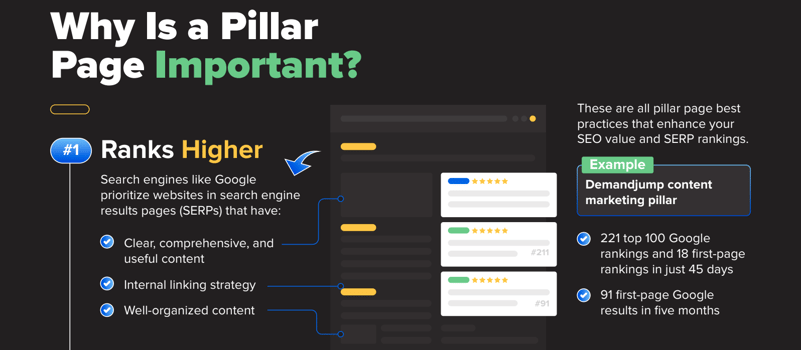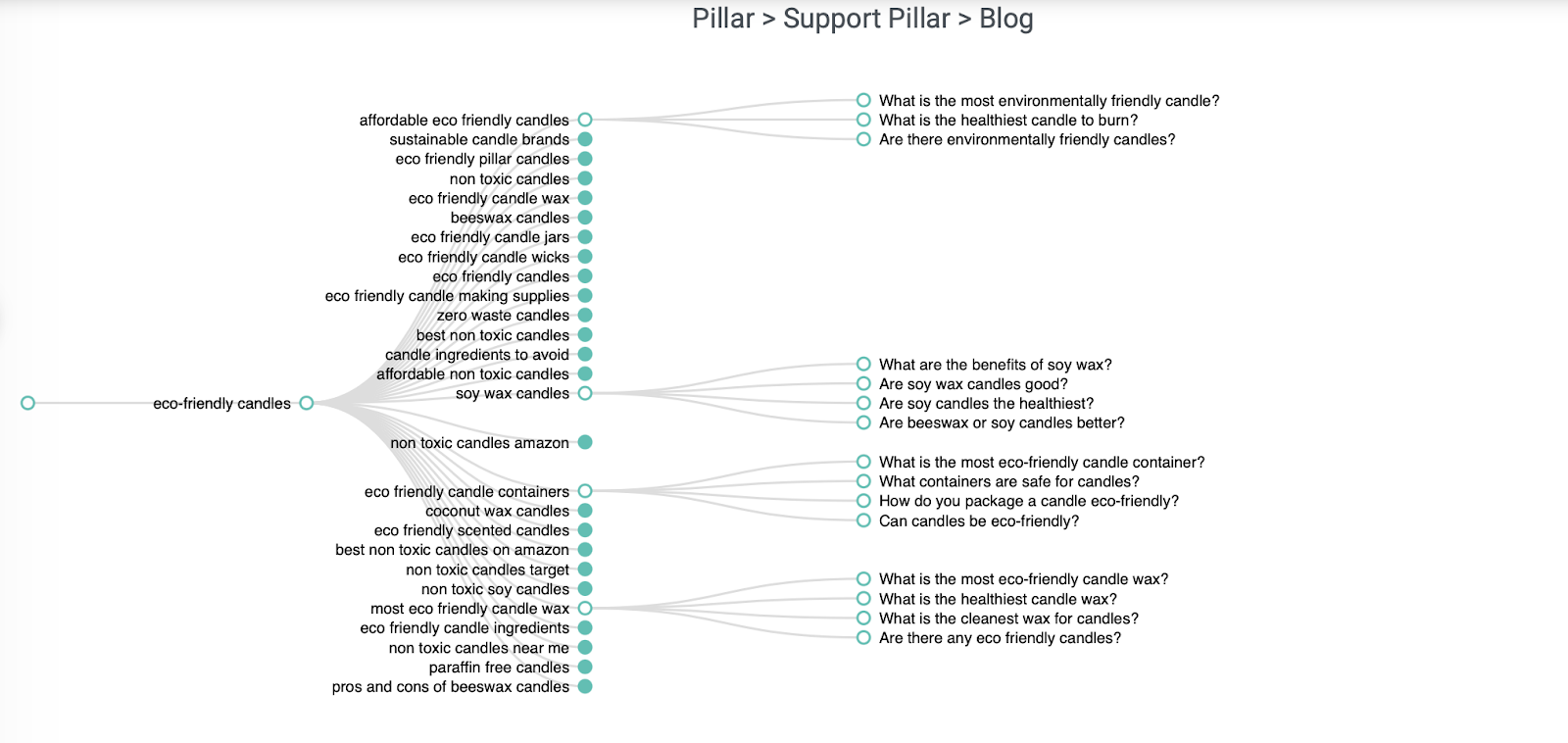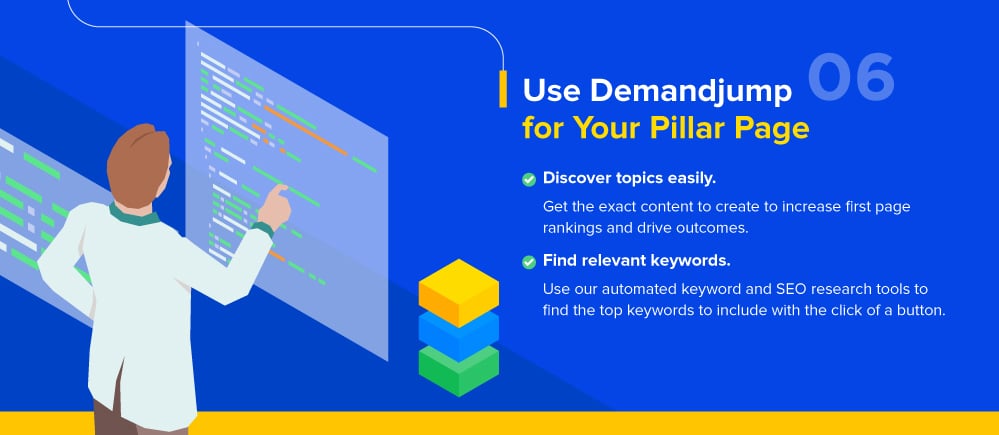How Do You Develop a PBM Strategy?
June 14, 2022 •Tamzin Walters

First things first: what is PBM? This stands for “Pillar-Based Marketing,” an alternative to Account-Based Marketing (ABM). The ABM approach to marketing is focused on the individual customer, targeting high value accounts and treating them as markets of one. PBM takes a more holistic approach—think of it this way: “if you build it, they will come.” Yes, we’re quoting cheesy…er…classic sports movies from the 1990s, don’t worry about it! The idea behind Pillar-Based Marketing is simple: answer the questions that your prospective customers are asking with a network of relevant, interesting content. By doing this, you will be rewarded by search engine algorithms with page one rankings all from your PBM marketing strategy. Essentially, giving folks the answers they’re looking for directly translates to quality leads and sales.
What Is a PBM Strategy?
A Pillar-Based marketing strategy refers to the process of selecting a topic for your pillar, sub-pillar, and supporting blogs. These are the pieces of content that will capture the majority of keywords and questions that customers are searching for. We recommend that you start with 16 pieces of content for your first PBM strategy. These pieces are:
- 1 pillar - Around 3,000 words
- 3 sub-pillars - Around 2,000 words each
- 12 blogs - Around 750 each
Each piece should contain keywords and questions that people are searching for in order to establish your authority around your chosen content.
 How Do You Develop a PBM Strategy?
How Do You Develop a PBM Strategy?
With DemandJump’s help, of course! We’re a bit biased, since PBM is our baby, but we truly believe that in order to create a successful PBM strategy, you need the best keyword research tool out there. You need to know what people are searching for—and we can help you do that.
Developing a PBM strategy starts with thinking about what topics are most relevant to your business. Let’s use the example of Jan, who started a small business that sells artisan, hand-poured candles made of soy wax in reused containers. When she sits down to make a list of topics, it might look something like this:
- Handmade candles
- Candle companies in Pennsylvania
- Small business
- Woman owned business
- Eco-friendly candles
- Gifts for the holidays
- Soy candles in recycled containers
- Sustainable home goods
As you can see, some of these categories are too broad, too narrow, and/or not directly relevant to her business. For example, “small business” is way too broad of a topic for a candle company while “soy candles in recycled containers” is too narrow. “Sustainable home goods” is the right size topic, but it encompasses way more information than just candles. Jan decides to go with “eco-friendly candles” as her first pillar topic.
With DemandJump, Jan creates an Insight Report for this phrase. The report gives her all of the keywords and questions that potential customers are asking. Using the “Pillar Strategy” function, Jan is able to easily see what she should write about:

Jan’s PBM marketing strategy now looks like this:
1 Pillar
- Eco-friendly Candles
3 Sub-pillars
- Soy Wax Candles (links to the pillar)
- Eco-friendly Candle Containers (links to the pillar)
- Most Eco-friendly Candle Wax (links to the pillar)
12 Supporting Blogs
- What Is the Most Environmentally Friendly Candle? (links to the pillar)
- What Is the Healthiest Candle To Burn? (links to the pillar)
- Are There Environmentally Friendly Candles? (links to the pillar)
- What Are the Benefits of Soy Wax? (links to the pillar and first sub-pillar)
- Are Soy Wax Candles Good? (links to the pillar and first sub-pillar)
- Are Beeswax or Soy Candles Better? (links to the pillar and first sub-pillar)
- What Is the Most Eco-friendly Candle Container? (links to the pillar and second sub-pillar)
- How Do You Package a Candle Eco-friendly? (links to the pillar and second sub-pillar)
- Can Candles Be Eco-friendly? (links to the pillar and second sub-pillar)
- What Is the Most Eco-friendly Candle Wax? (links to the pillar and third sub-pillar)
- What Is the Cleanest Wax for Candles? (links to the pillar and third sub-pillar)
- Are There Any Eco-friendly Candles? (links to the pillar and third sub-pillar)
In each of these pieces of content, Jan will use additional keywords and questions from the DemandJump platform. The pillar will contain 15-20, each sub-pillar will have 10-15, and every blog will use 5-10. This creates the network or spiderweb of keywords that will bring in potential customers.
Remember: increased Page One rankings for mission-critical topics directly translates to increased qualified traffic to Jan’s website. Page One spots lead to higher conversion rates down funnel, lower acquisition and paid search costs, and an entire marketing strategy that aligns to customer pain.
What Is a PBM Platform? DemandJump.
Here at DemandJump, we pride ourselves in being the #1 marketing strategy platform that shows you the exact content to create to increase first page rankings and drive outcomes. Piller-Based Marketing is a new approach, and you’re sure to have questions about whether or not it actually works. We don’t blame you! Here’s just a small sample of the results we’ve seen— Our “SEO” pillar resulted in:
- 100 new first page rankings within one month of publishing.
- 10% increase in “SEO” topic-related traffic in less than a month.

Our PBM strategy increased our conversions drastically for the “SEO Pillar.” This process was made easier with the intuitive Pillar-Based Marketing tools that are built right into our platform. Soon you’ll be able to take our PBM marketing course through DemandJump University to learn everything about PBM to start experiencing these transformational results. In the meantime, try our platform for free to get insights and drive outcomes.
Featured Articles
Categories
- Attribution Tracking (13)
- Channel Optimization (11)
- Consumer Insights (68)
- Content Marketing (251)
- Data Science (8)
- Digital Marketing (6)
- Digital Transformation (26)
- Enterprise (10)
- Lead Generation (14)
- Market Intelligence (8)
- Marketing Analytics (39)
- Marketing Attribution (57)
- Marketing Management (153)
- Marketing Operations (86)
- Organic Search (222)
- Paid Search (52)
- Pillar-Based Marketing (63)
- Programmatic Advertising (9)
- SaaS Content (14)
- SaaS Marketing (29)
- Search Marketing (111)
- SEO Keyword Research (28)
- SEO Pillar (18)
- SEO Strategy (46)
- SMB (5)
- Website Content (12)


